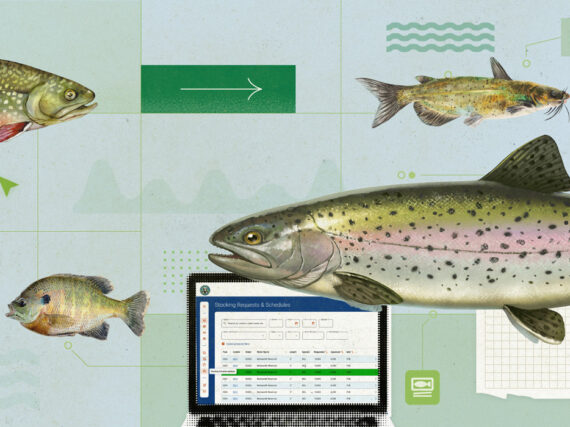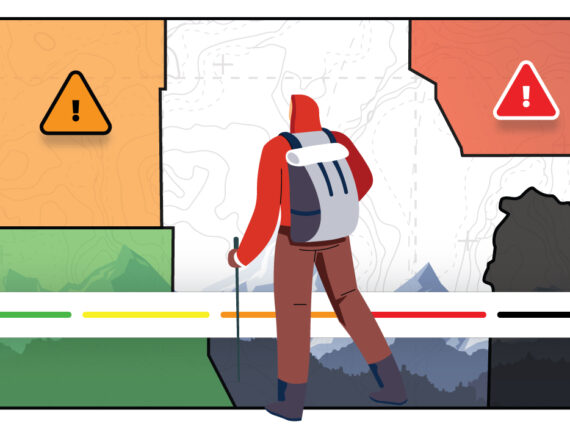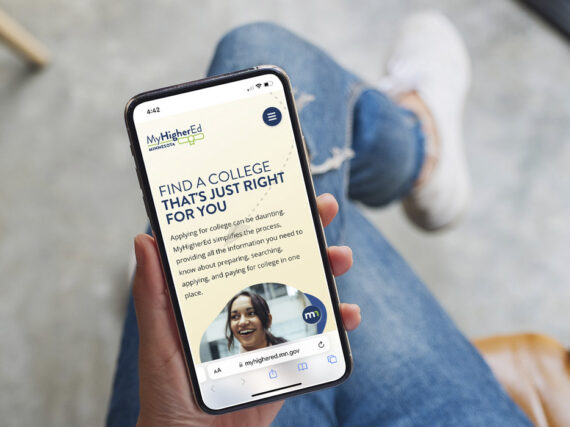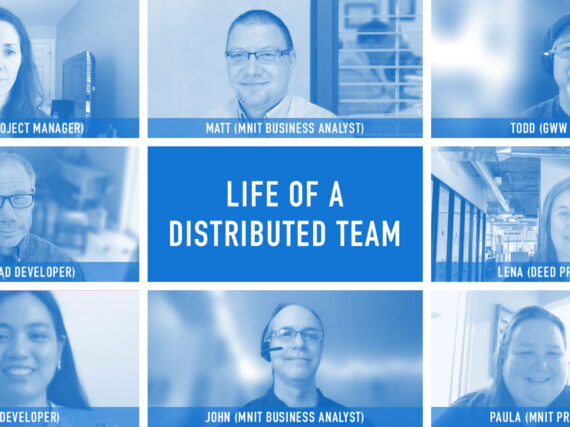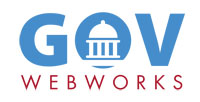Analogous research is an important part of the design process. For our work on the Missouri Department of Transportation (MODOT) website redesign, we’ve been looking at DOT sites for best practices and inspiration. To take this further, I decided to check with the teams behind some sites on the list (Colorado, Iowa, Maine) to learn more about their redevelopment processes.
We found certain goals were consistent across all three sites:
- Strong commitment to letting user feedback drive design and information architecture.
- Focus on adoption and use of modern technologies to better engage with users.
- Rigorous process for content analysis, coupled with more flexible tools for content management.
Each state’s approach was shaped by its own unique organizational makeup, technical landscape and even geography, but we found their insights valuable. Not only do they echo many of the best practices we’re employing on the MODOT site redesign, but they emphasize the importance of these practices in creating a successful communication platform.
These examples clarify the goal for many DOT sites (and many other public agencies for that matter). Namely, to transform from an administratively-driven repository for information, both vital and obscure, to a citizen-centric resource that prioritizes design and content based on data and user feedback.
Here are some of the key takeaways from the states we contacted:
Iowa
Iowa DOT began their site redesign efforts in July of 2013 in the effort to address navigational challenges and create a better customer experience. Like many DOT sites, IowaDOT.gov provides information on a broad range of subjects including licensing, travel, and business contracts across some 11,000 pages. Inevitably, given its scale, the original site had many layers which made it complicated to navigate and hard for customers to find appropriate content.
Goals
The Office of Strategic Communications and Policy (OSCP) sought to change the public perception of the Iowa DOT. This meant fostering a relationship with customers in order to shift the perception of government websites. Looking to adopt current web best practices, Iowa DOT wanted a modern and personal site with customer friendly appeal. Naturally, they favored visual designs that showcased the roads, aviation, bike trails, and other aspects of their core mission.
Also following current consumer expectations, Iowa DOT wanted to push more services online. Users can now renew driver licenses, change addresses, pay fines, gain access to driving records, and register to vote.
Process
During discovery, the project lead, Cherice, and the OSCP project team looked at site analytics to understand how people were accessing information on the site. This data was augmented through user surveys that sought to collect data on what people were seeking on the old site. The aggregated data helped to shape the look and feel of the new mobile responsive design and improve organization so customers could find content more easily.
The team had originally discussed organizing their site by audience like other states in this article, but based upon the data they collected, they decided to organize by topic, with user groups and audience secondary.
At the same time the team needed to examine a huge volume of content and perform a complete content audit, merging pages together into relevant topic domains and removing duplicate and stale information. There were some initial trepidation to this amongst content owners, but the team persisted, providing their data analysis as support for a complete site overhaul.
For the content that remained, the team dedicated significant time to ensuring a consistent tone and style, replacing redundant and overly technical government language with a clear “jargon free” style.
Though this effort was time consuming and required commitment from the team as well as buy-in from the top, the move away from an office structured site (which didn’t make sense for customers), towards a topic-based approach has been a major success.
Takeaways
As well as creating an intuitive architecture and design, the Iowa team advises supplementing navigation with a strong search feature. They use a Google-based search tool, as well as an A-Z index, which is cross referenced, with topics highlighted in multiple ways.
Their work didn’t end at launch either. They are regularly updating items, checking content for consistency, fixing for broken links, and maintaining the look and feel of the site. Going forward they aim to enhance accessibility and add travel alerts built on native mobile apps.
Above all, they recommend focusing on customer needs as any for-profit business would, which means good navigation, intuitive design, and consistent branding.
Colorado
When Colorado DOT (CODOT) was looking to replace and update their website, they looked to other neighboring states for best practices and style inspiration. Not surprisingly, one of these sites was Iowa DOT, detailed above, from which Colorado borrowed inspiration. In the end they used a similar tile strategy on the home page to direct users, and also spent a lot of time on content organization.
Goals
Colorado wanted to unify two different transportation sites, their primary site, CoDoT.gov, and COtrip.org, a traveller information site with cameras, kiosks, and maps.
Valerie, the project lead, and her team spent considerable time looking at new technologies and determining how they might help their department goals. Consequently they found that touch screens and mobile devices would encourage users to engage with the DOT. While, Colorado decided to set up user friendly kiosks with touch screens located at visitor sites around the state, they didn’t want to create separate interfaces so they asked the kiosk team to integrate the new site in to their plans.
They also wanted it to be easy to access DOT information via phone and use automated voice, text, and email alerts. The team continually strives to streamline the experience and experiment with technologies such as connected vehicles and apps like Waze.
Process
Like Iowa, the Colorado DOT site was designed for easy access to key content. Although they decided not to re-map all content, they recognized that with 25,000 pages originally, there was a high potential to overwhelm the users. The team looked at who their users were and what they needed, and outlined different ways to deliver the right content, in manageable doses. Using a similar data-driven approach, they identified their six biggest user groups, and made them a core focus of the site’s new design.
In addition to Valerie’s project team, the DOT had the support of their state OIT, and a consultant contract. They use Plone for the content management of the site based on prior experience with the platform. The open source CMS provides good command-and-control over content, while being easy to update without effecting the site design.
Takeaways
To better utilize their budget and staff resources, Colorado has taken a modular approach, eating the elephant one bite at a time to accomplish their complete site re-build. Valerie also stressed keeping ahead of technology changes, and taking inspiration from other like-minded customer-focused agencies. As well, a continual goal is maintaining consistency throughout each sub-site and page to create the best possible customer experience.
Maine
When MaineDOT reorganized their communications office about five years ago, the newly named Office of Creative Services initiated a redesign of MaineDOT’s website.
Goals
MaineDOT’s webpage, MaineDOT.gov, is intended to further MaineDOT’s mission through relevant, timely and easily accessible information and resources. In order to do this effectively, the new website needed to be user-focused, easy to navigate, and up-to-date.
Process
MaineDOT wanted a mobile-friendly site and saw this potential reduction in screen real estate as a good argument for rationalizing its content inventory. Each office and bureau within the department was provided with the annual analytics for their pages. If the page didn’t meet the minimum requirements of 50 hits per month or 600 per year, it would be removed from the site. In the case of federally mandated content, it would be re-formatted.
As these audits were in process, a new responsive and audience-focused website was being designed. Like Iowa, the new site was organized according to audience. Key segments included government users, residents, businesses, traveling public, contractors, and tourists.
As the Maine site is more like a collection of micro-sites under one umbrella, it has more varied user groups than other large departments. Consequently, the content on MaineDOT site was organized using a variety of tabs, accordions, pop-ups, and sliders for easier navigation between the many groups. The home page is reserved for the latest news, high profile projects, and important content for viewers, with sought after content at the top of the page (above the fold).
The entire website is consistent with the new MaineDOT style guide. This means plenty of white space, a friendly and conversational tone (whenever possible), and contemporary icons and photography.
Takeaways
Tricia at MaineDOT recommends using responsive or mobile-first design to assure that all elements on a web page display properly on all devices.
She also encourages concise content. “We found it best to avoid long intro paragraphs or about us sections as most folks are not interested in the history of how an office came to be. They simply want to get an answer to their transportation questions.” It’s also better to avoid 1,000 word pages and break-up long content with images, infographics, charts, videos, call-outs, tabs, and accordions.
For site structure, Tricia suggests defining the audiences first, then organizing site structure based on how these groups would search for information. She also advocates for a clear web writing style guide, encouraging MaineDOT web authors to think like a customer, put conclusions at the beginning and not waste readers time with “fluff” content.
In summary
As part of our work with Missouri, it’s been interesting to hear about the similar processes and best practices used by other states.
Specifically, when it came to user experience we were encouraged to find the following trends:
- Changes supported with data and audience research, providing objective justification for site changes.
- Recognition of current consumer expectations for service deliver, and ongoing efforts to meet these through new technology.
- An acknowledgment that more content doesn’t equal better content, and being rigorous about length, style and layout of pages.
While states differed on their preference for topic- or audience-based tiles for information gateways, there was always a strong commitment to providing the best possible customer experience. Using tested modern technologies and UX practices, these states have developed fully accessible and inviting DOT sites with intuitive navigation and easy search functionality.
Like Iowa, Colorado, and Maine, the Missouri DOT is furthering the transformation of DOT sites around the country. Stay tuned for details on the launch this fall.
Learn more
- Iowa DOT
- Colorado DOT
- Maine DOT
- Contact us for more info on DOT website upgrades
Author bio
Ravi Jackson has a background in law, finance, and policy, with 10 years of experience in the Maine state government. A witty Brit with a gift for discourse, he welcomes further discussion on this topic. He can be reached at ravi.jackson@govwebworks.com and @RaviJacksonGWW on Twitter.


